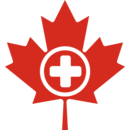The Department of National Health and Welfare (NHW), commonly known as Health and Welfare Canada, was a Canadian federal department established in 1944.
Its advisory body on welfare was the National Council of Welfare. In June 1993, Prime Minister Kim Campbell split the department into two separate entities: Health Canada and Human Resources and Labour Canada (later Human Resources Development Canada).
History
| Part of a series on |
| Healthcare in Canada |
|---|
 |
| Health Canada |
| History of medicine |
| Topics |
|
|
Canada's original Department of Health was created in 1919. It would merge with the Department of Soldiers' Civil Re-establishment in 1928 to form the Department of Pensions and National Health. Soon after, the Department of National Health and Welfare would be established in 1944.
In June 1993, Prime Minister Kim Campbell split the department into two separate entities: the portfolio related to health would form Health Canada, while social-development and income-security programs (i.e., the 'welfare' side) would form Human Resources and Labour Canada—which also combined Labour Canada, the employment programs of Employment and Immigration Canada, and the social-development and education programs from the Secretary of State. Within a few months, a new government was elected, after which Human Resources and Labour became known as Human Resources Development Canada.
Ministers of Health and Welfare
| No. | Minister | Term | Ministry |
|---|---|---|---|
| 1. | Brooke Claxton | October 18, 1944 - December 11, 1946 | under Prime Minister William Lyon Mackenzie King |
| 2. | Paul Martin Sr. | December 12, 1946 - November 15, 1948 | |
| November 15, 1948 - June 20, 1957 | under Prime Minister Louis Stephen St. Laurent | ||
| * | Alfred Johnson Brooks (Acting) | June 21, 1957 - August 21, 1957 | under Prime Minister John Diefenbaker |
| 3. | Jay Waldo Monteith | August 22, 1957 - April 21, 1963 | |
| 4. | Judy LaMarsh | April 22, 1963 - December 17, 1965 | under Prime Minister Lester Bowles Pearson |
| 5. | Allan MacEachen | December 18, 1965 - April 19, 1968 | |
| April 20, 1968 - July 5, 1968 | under Prime Minister Pierre Elliott Trudeau | ||
| 6. | John C. Munro | July 6, 1968 - November 26, 1972 | |
| 7. | Marc Lalonde | November 27, 1972 - September 17, 1977 | |
| 8. | Monique Bégin | September 18, 1977 - June 3, 1979 | |
| 9. | David Edward Crombie | June 4, 1979 - March 2, 1980 | under Prime Minister Joe Clark |
| Monique Bégin (2nd time) | March 3, 1980 - June 29, 1984 | under Prime Minister Pierre Elliott Trudeau | |
| June 30, 1984 - September 16, 1984 | under Prime Minister John Turner | ||
| 10. | Jake Epp | September 17, 1984 - January 29, 1989 | under Prime Minister Brian Mulroney |
| 11. | Perrin Beatty | January 30, 1989 - April 20, 1991 | |
| 12. | Benoît Bouchard | April 21, 1991 - June 24, 1993 | |
| 13. | Mary Collins | June 25, 1993 - November 3, 1993 | under Prime Minister Kim Campbell |
| 14. | Diane Marleau | November 4, 1993 - January 24, 1996 | under Prime Minister Jean Chrétien |
| 15. | David Dingwall | January 25, 1996 - July 11, 1996 |
See also
References
- ^ "Welfare Reforms in Canada - Réformes du bien-être social au Canada". Archived from the original on 2012-05-05.
- ^ "Senior Services". www.amherstburg-cs.com. Archived from the original on 7 August 2007. Retrieved 15 January 2022.
- Cheung-gertler, Jasmin H. 2008 November 26. "Health Canada." The Canadian Encyclopedia (last updated 2014 August 5).
- "Human Resources Development Canada Sustainable Development Strategy II." Human Resources Development Canada. 2004 March 10.
- "Brian Brooke Claxton | The Canadian Encyclopedia". www.thecanadianencyclopedia.ca. Retrieved 2021-01-24.
Further reading
- Health and Welfare Canada and Department of Finance. 1982. Better Pensions for Canadians (green paper).
- Collishaw, Neil. 2009. "History of tobacco control in Canada." Physicians for a Smoke-Free Canada.
- National Capital Alliance on Race Relations vs. Canada (Health and Welfare): A Case Study
- https://web.archive.org/web/20120505032106/http://canadiansocialresearch.net/welref.htm
- https://web.archive.org/web/20130524112429/http://www.statcan.gc.ca/pub/11-516-x/sectionc/4057749-eng.htm
This Canadian government–related article is a stub. You can help Misplaced Pages by expanding it. |